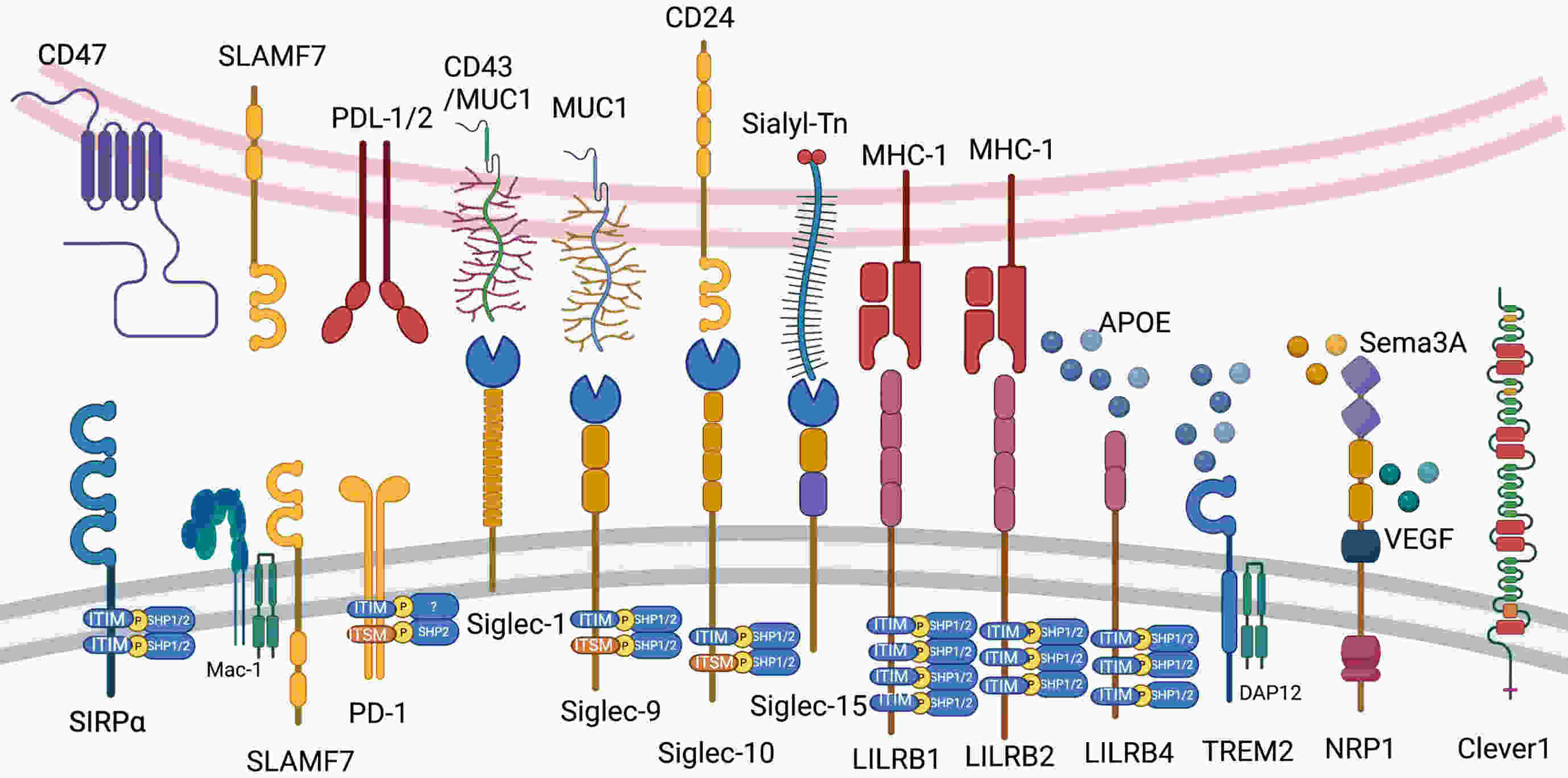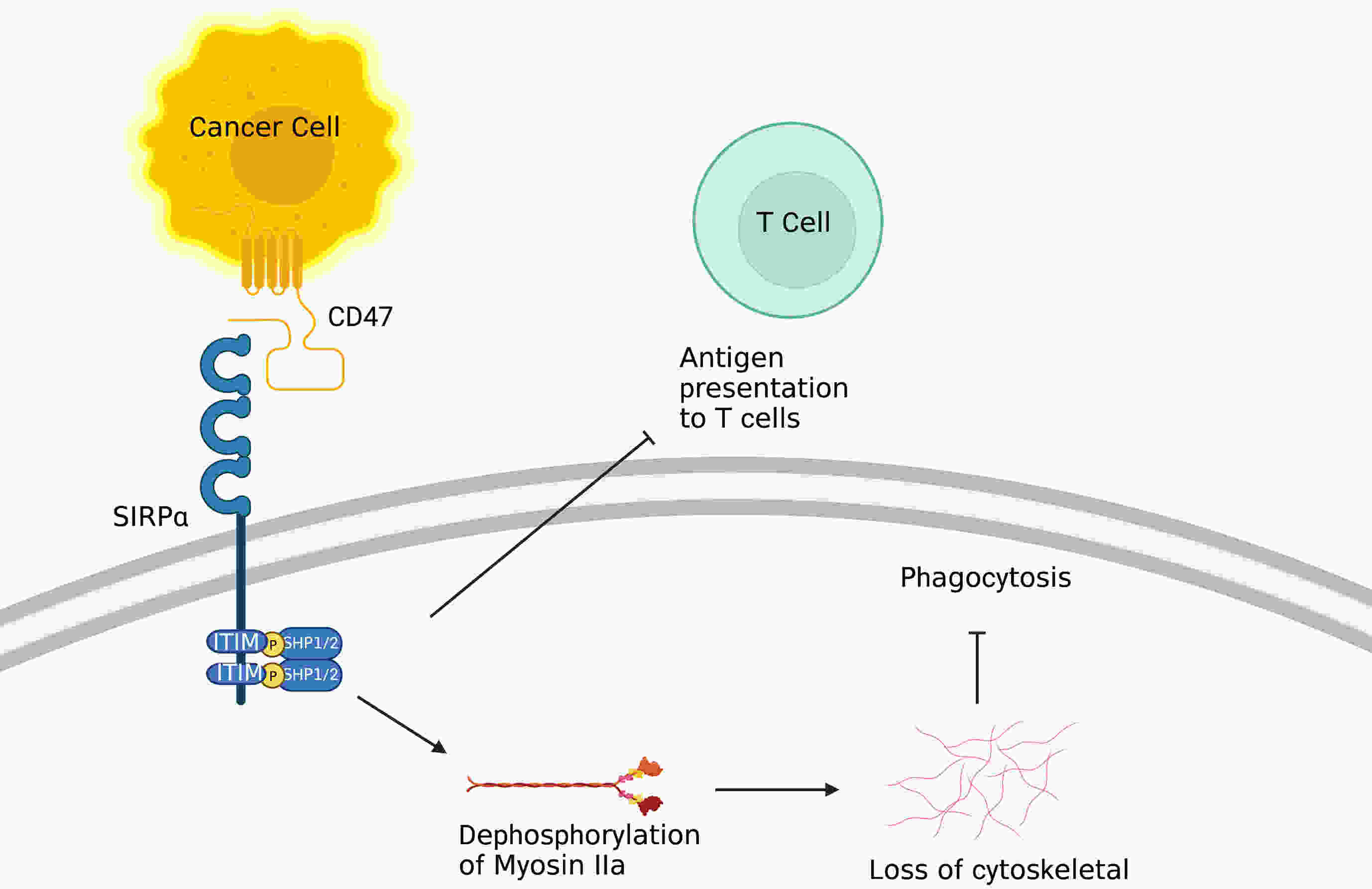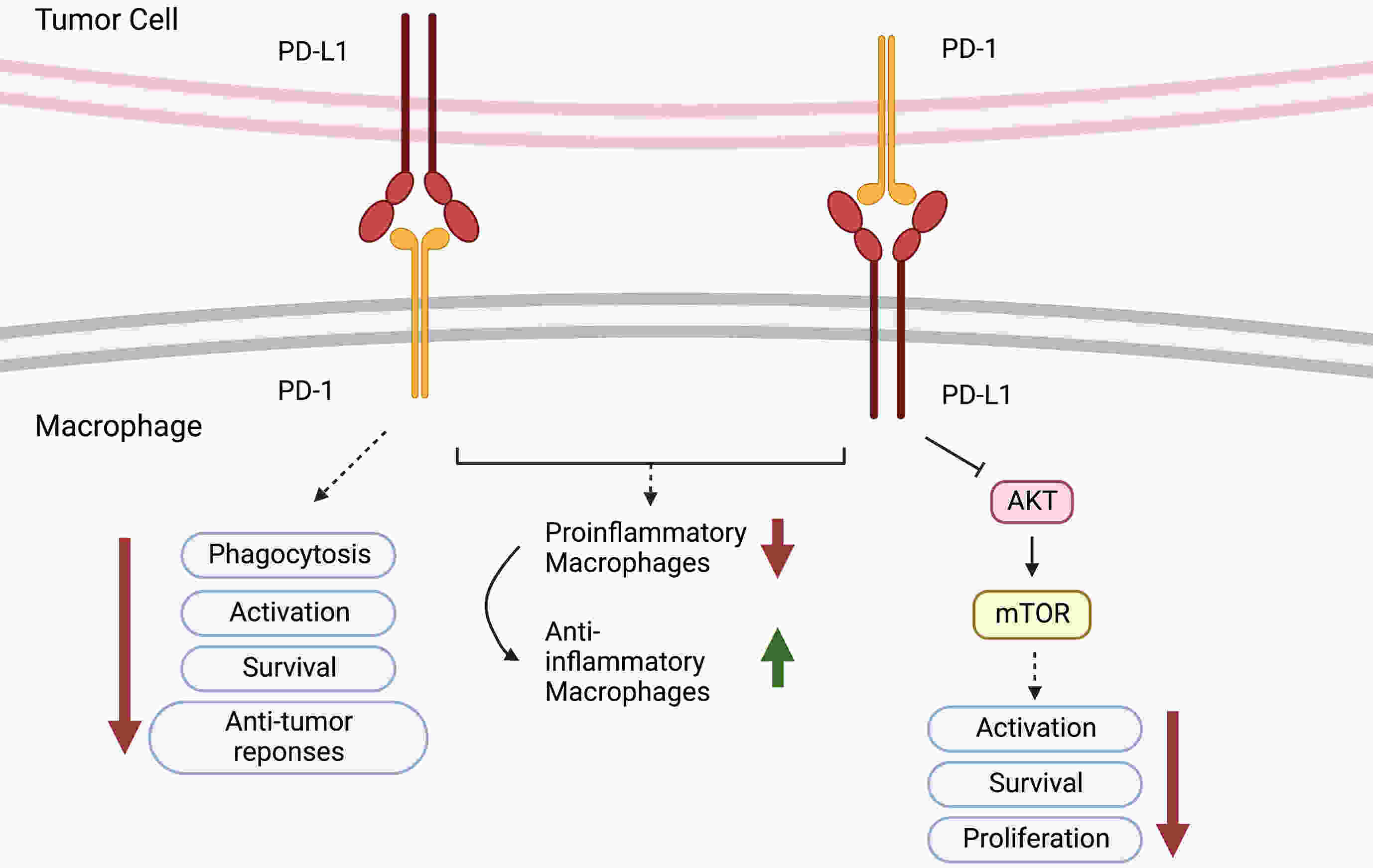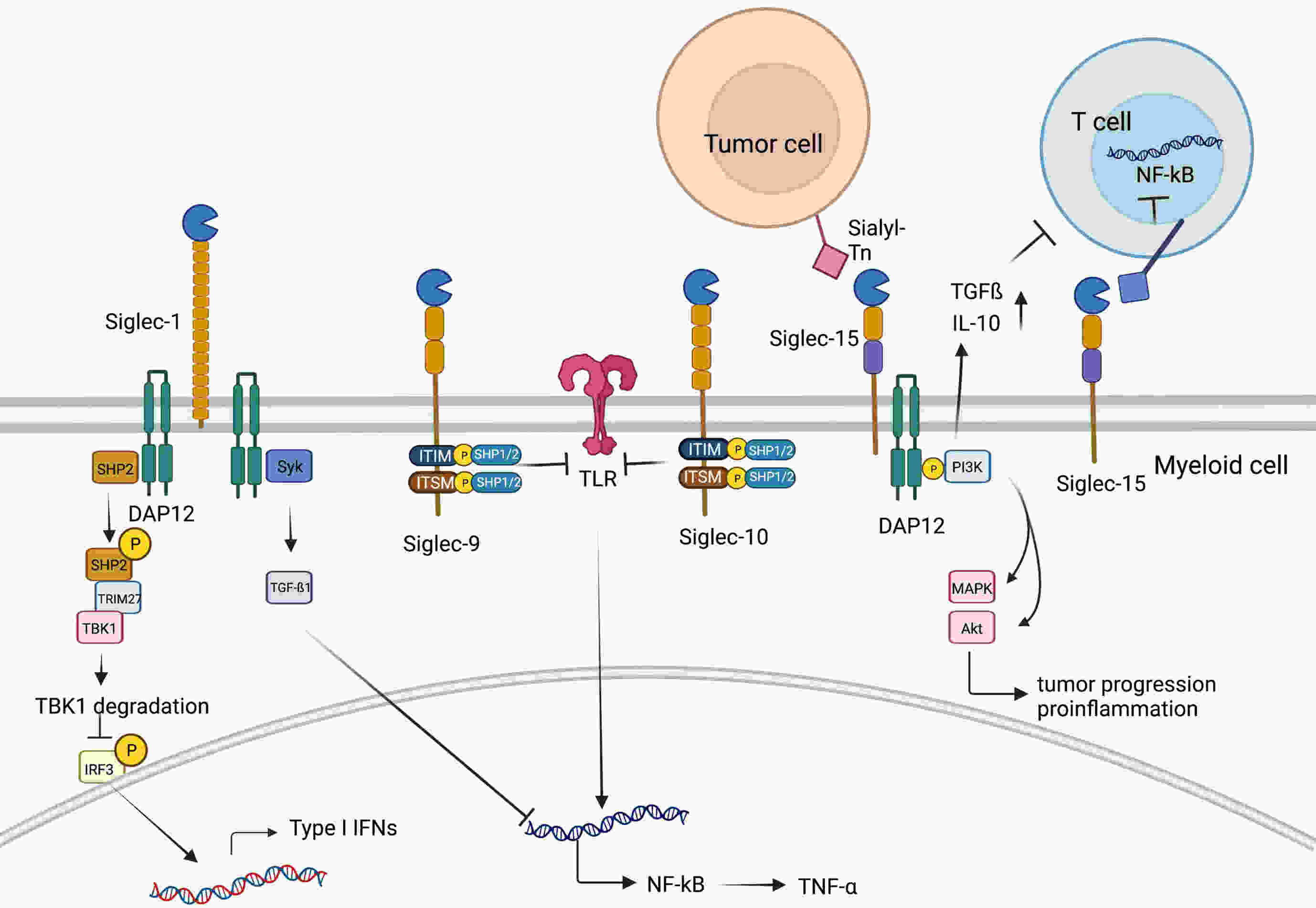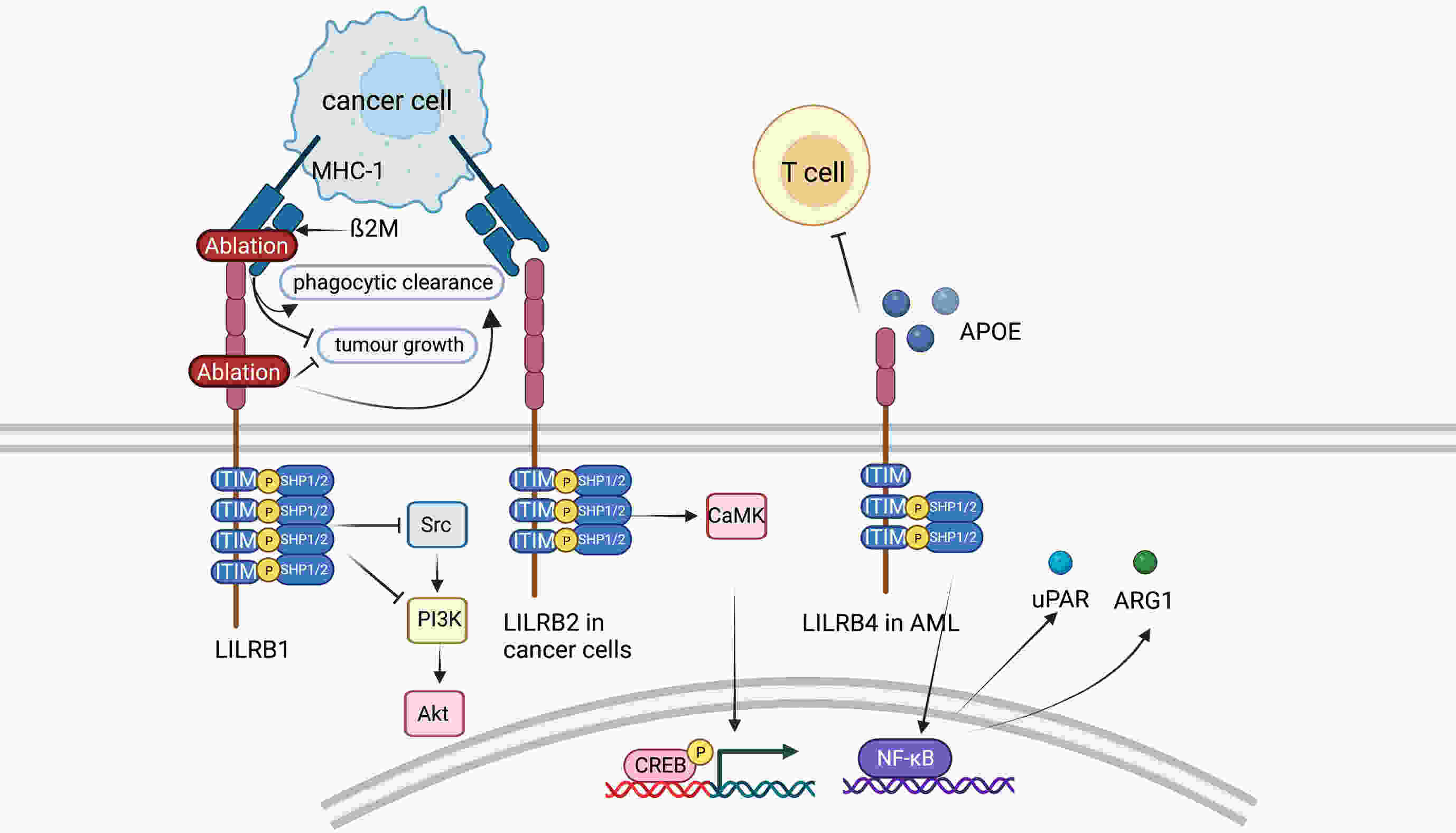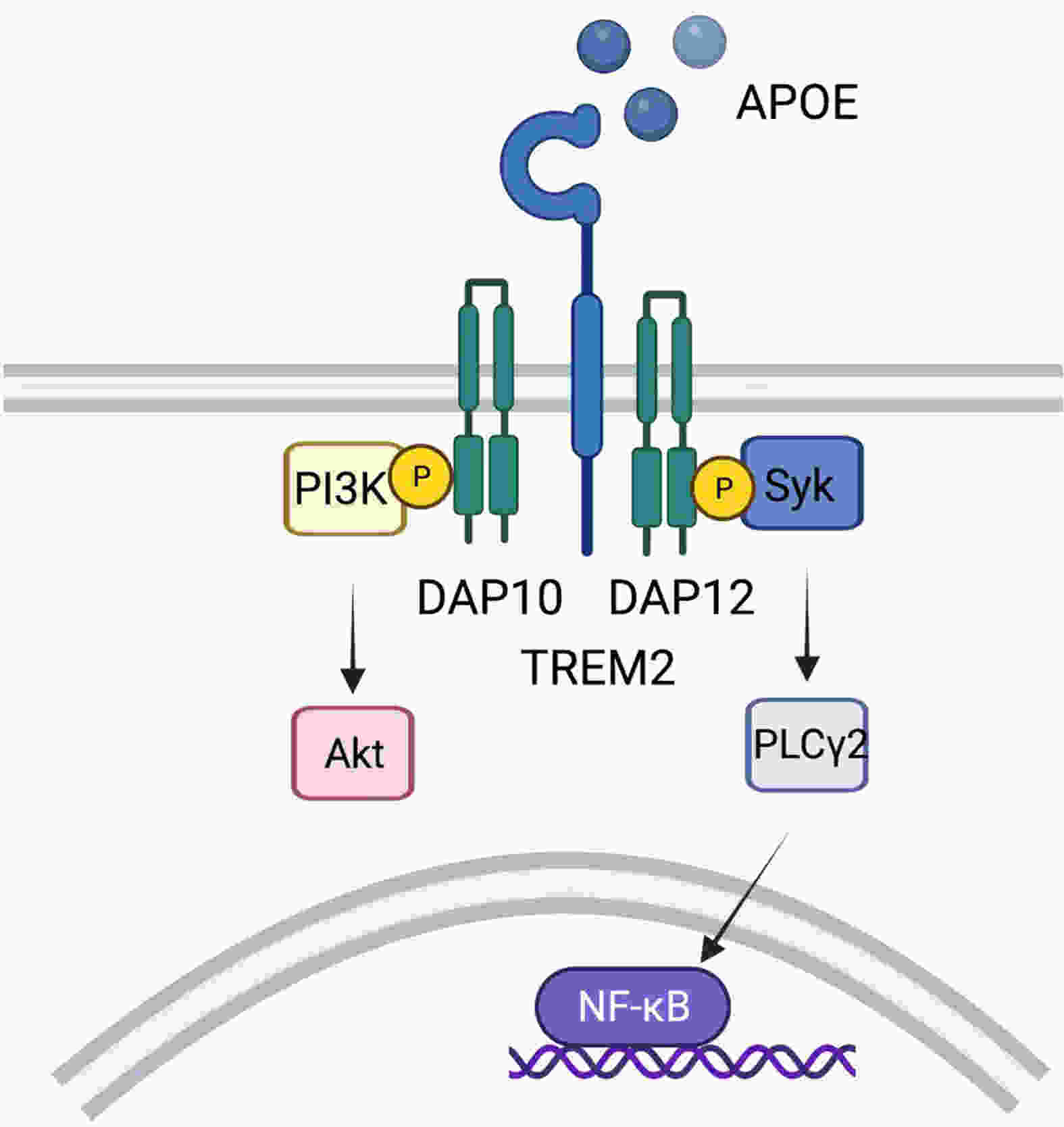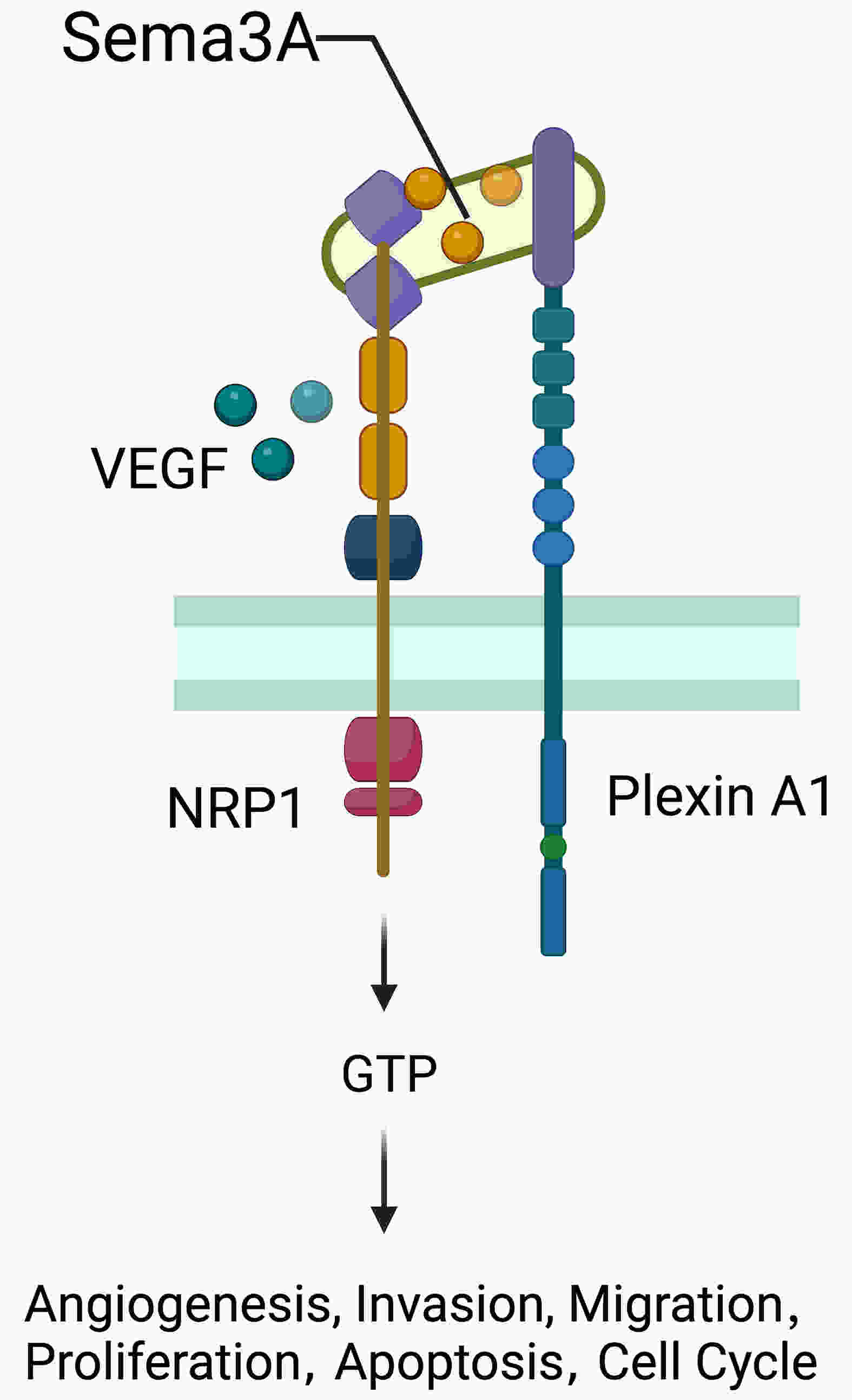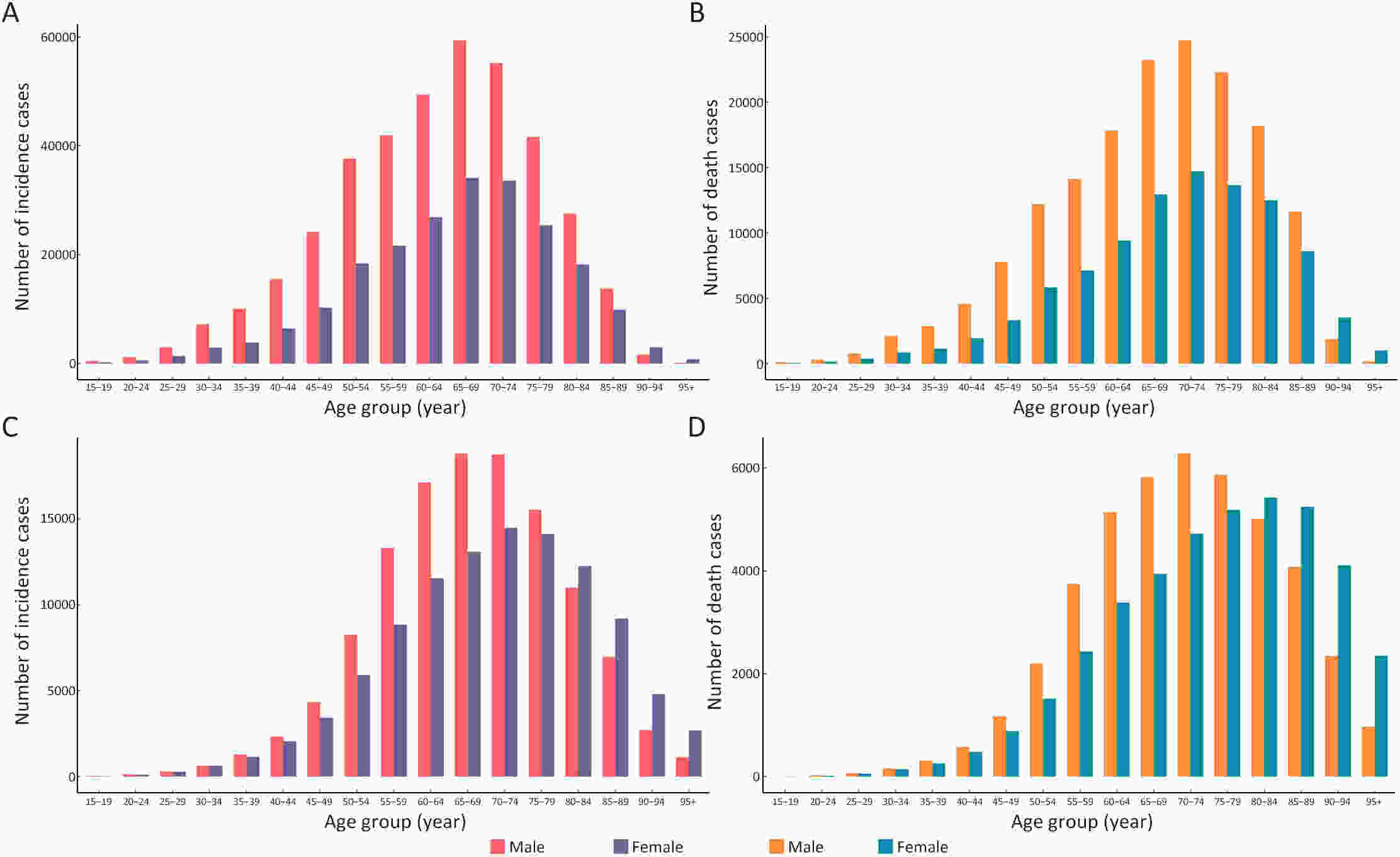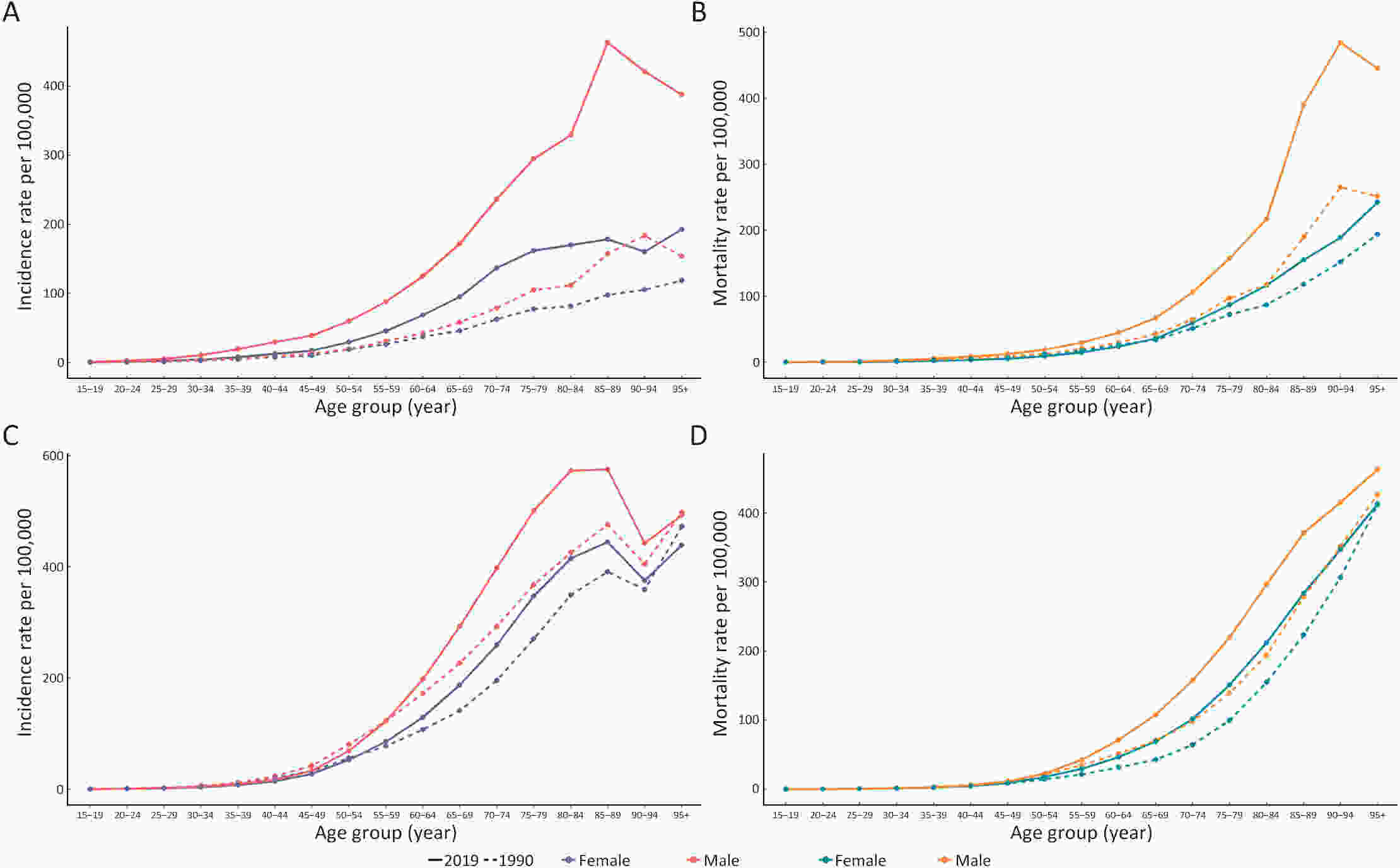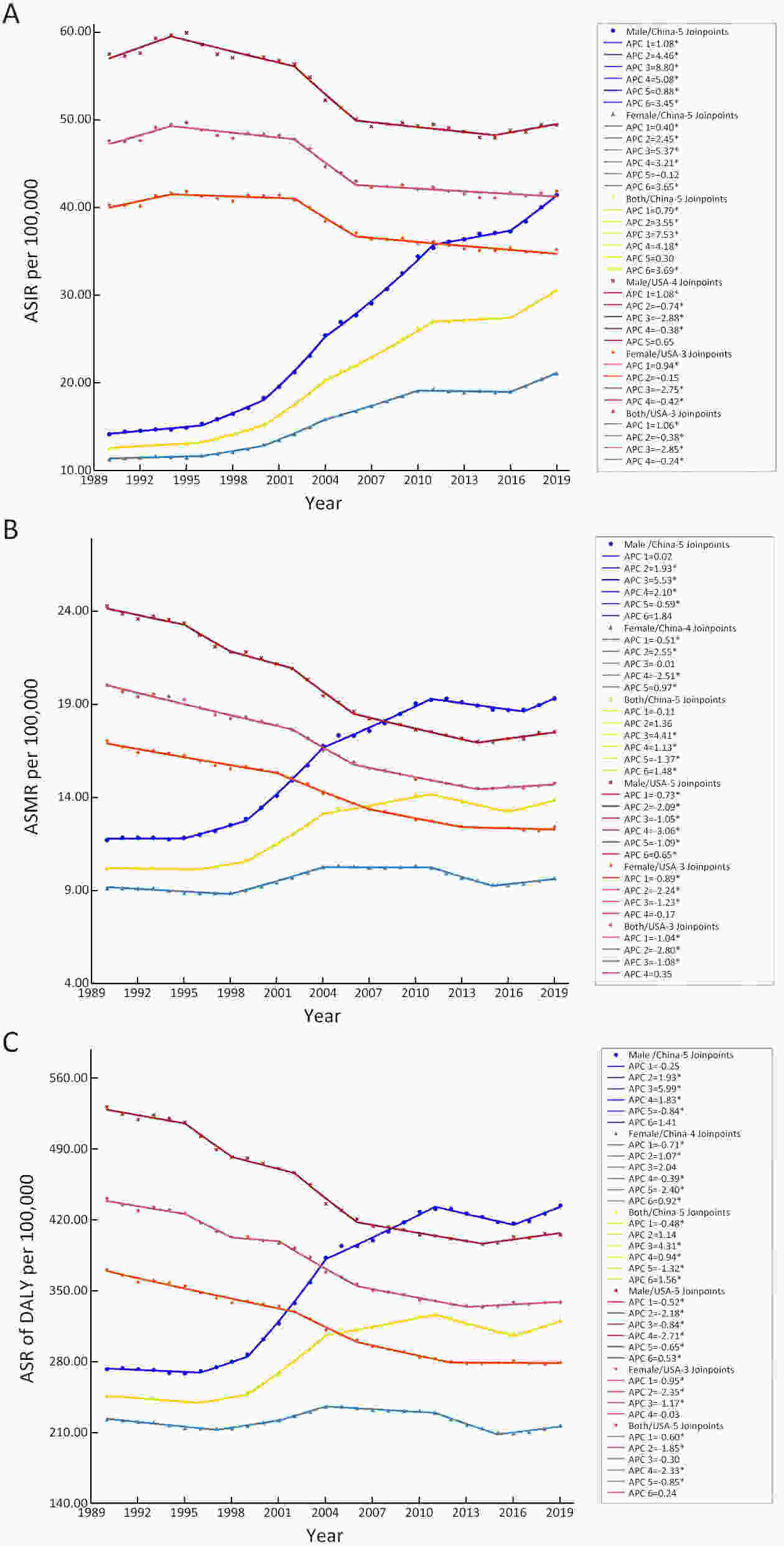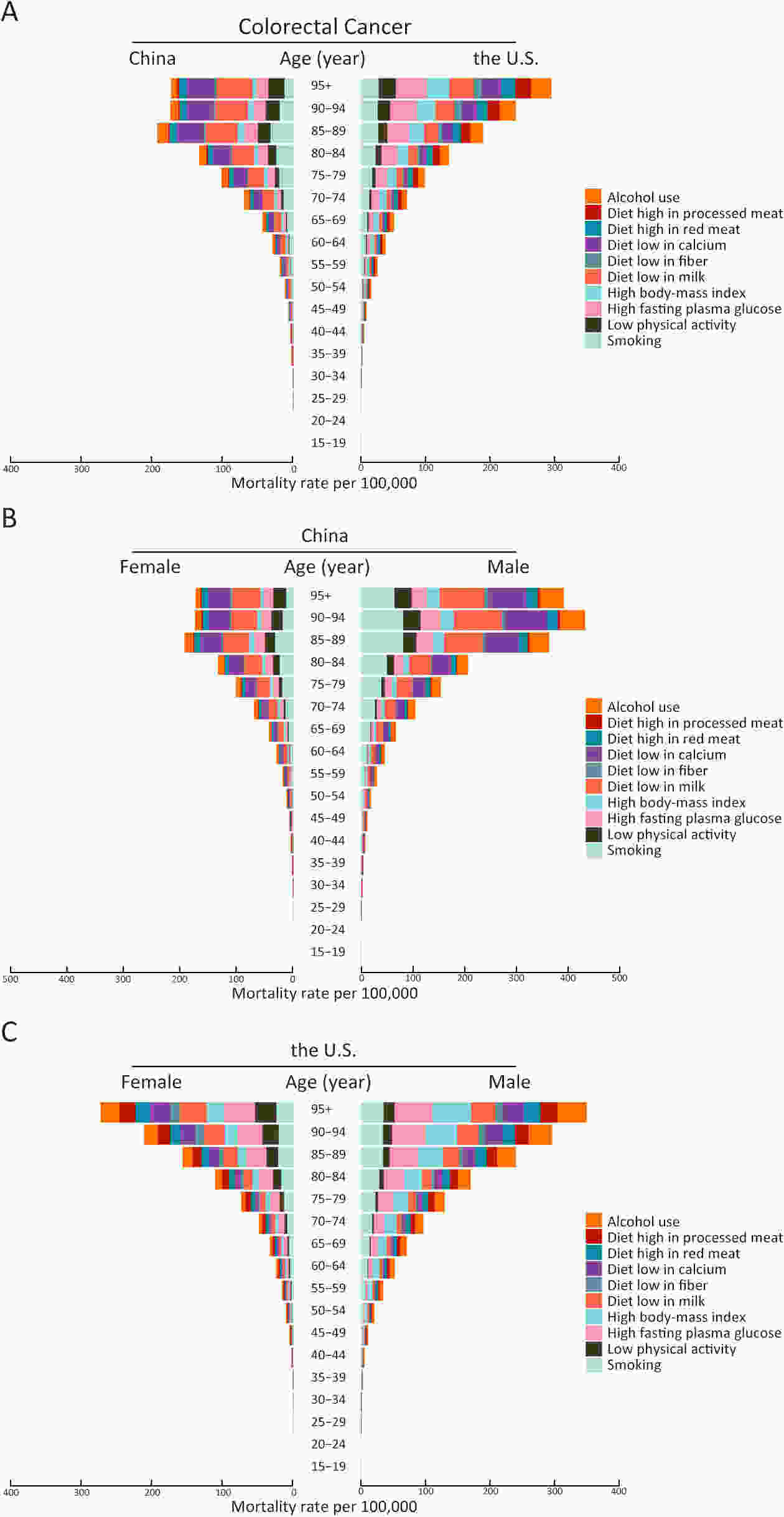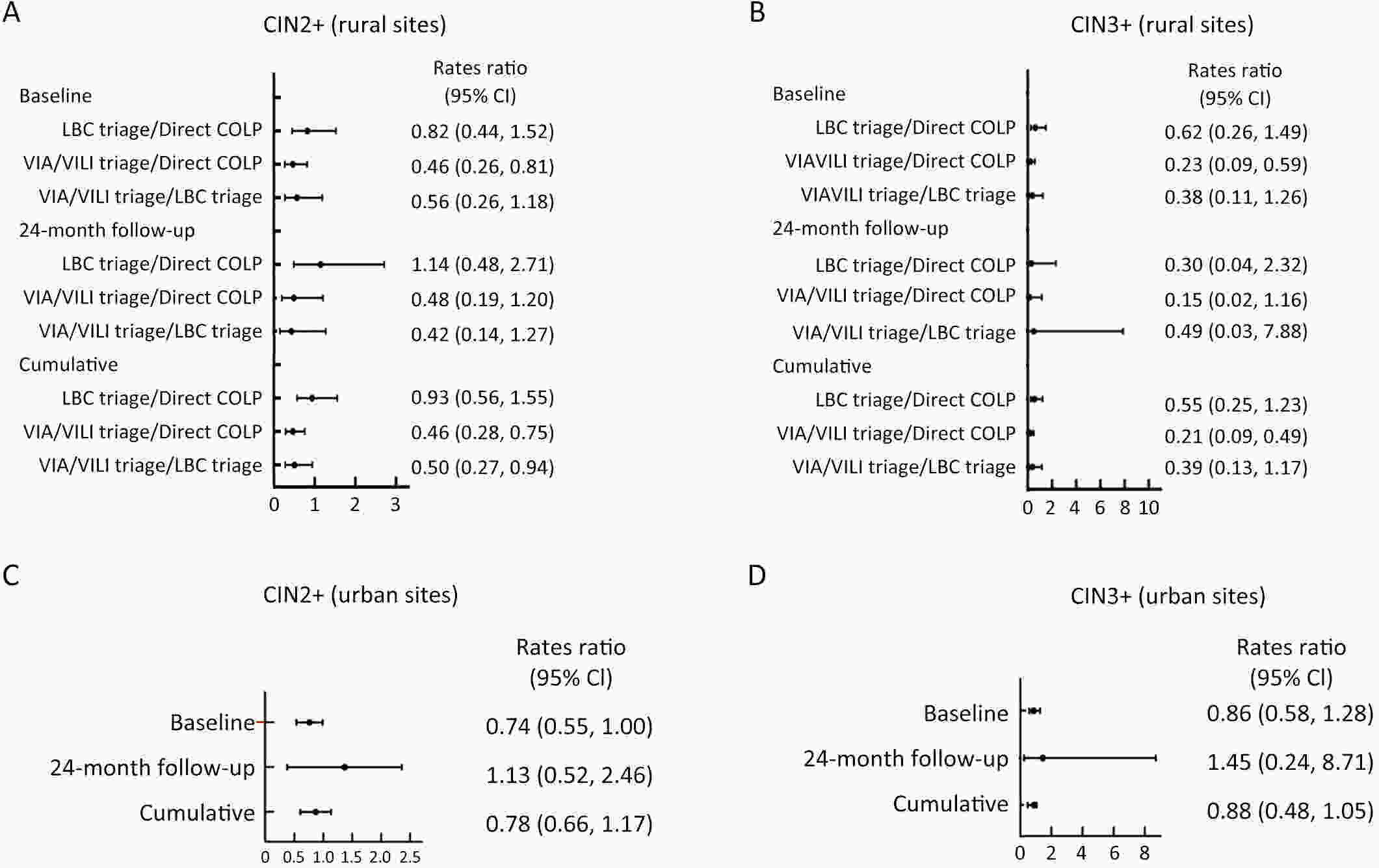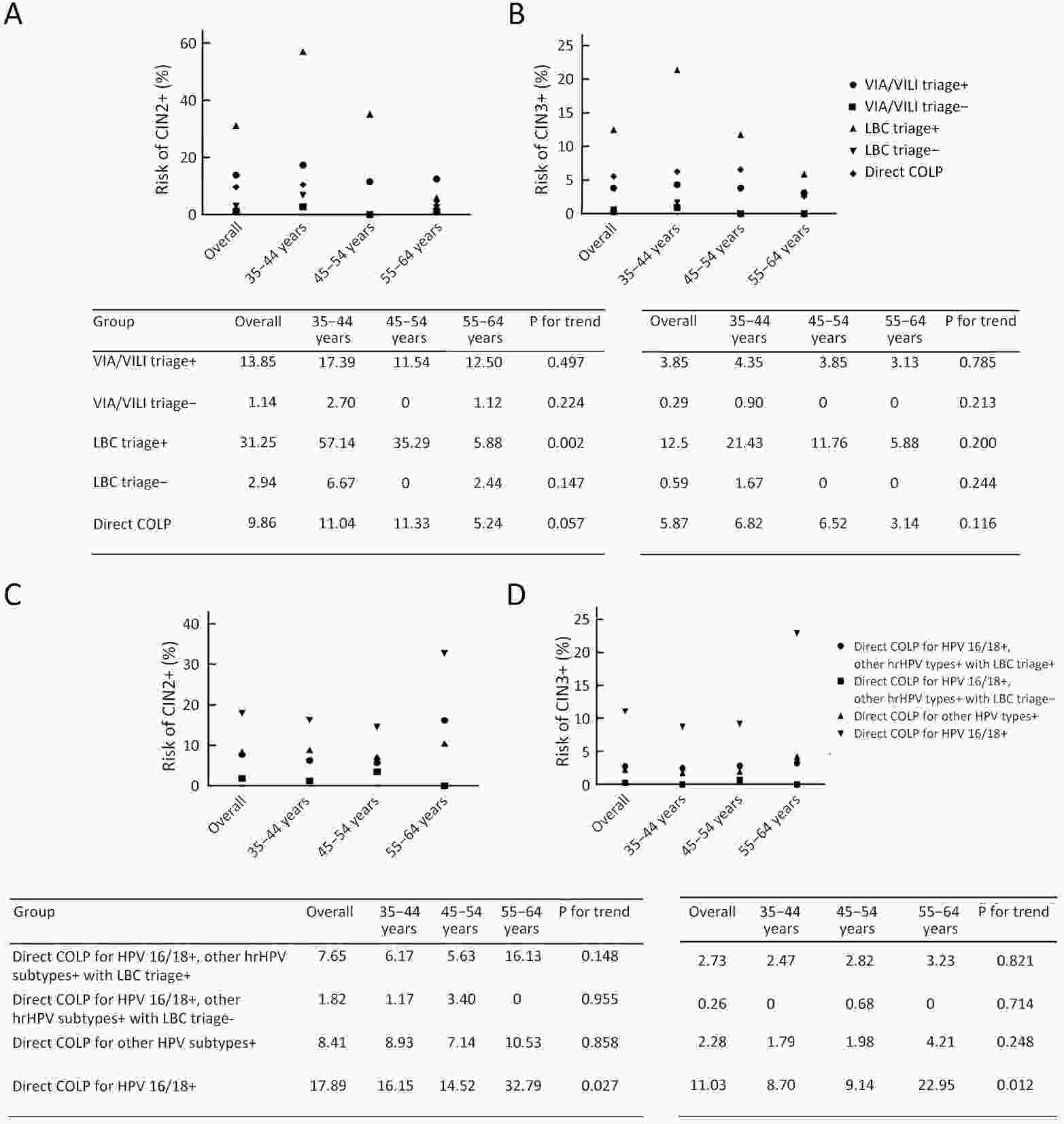2022 Vol.34(5)
Display Mode: |
2022, 34(5): 425-446.
doi: 10.21147/j.issn.1000-9604.2022.05.01
Abstract:
2022, 34(5): 447-450.
doi: 10.21147/j.issn.1000-9604.2022.05.02
Abstract:
2022, 34(5): 451-452.
doi: 10.21147/j.issn.1000-9604.2022.05.03
Abstract:
2022, 34(5): 453-455.
doi: 10.21147/j.issn.1000-9604.2022.05.04
Abstract:
2022, 34(5): 456-457.
doi: 10.21147/j.issn.1000-9604.2022.05.05
Abstract:
2022, 34(5): 458-459.
doi: 10.21147/j.issn.1000-9604.2022.05.06
Abstract:
2022, 34(5): 460-482.
doi: 10.21147/j.issn.1000-9604.2022.05.07
Abstract:
Myeloid checkpoints are receptors on the myeloid cell surface which can mediate inhibitory signals to modulate anti-tumor immune activities. They can either inhibit cellular phagocytosis or suppress T cells and are thus involved in the pathogenesis of various diseases. In the tumor microenvironment, besides killing tumor cells by phagocytosis or activating anti-tumor immunity by tumor antigen presentation, myeloid cells could execute pro-tumor efficacies through myeloid checkpoints by interacting with counter-receptors on other immune cells or cancer cells. In summary, myeloid checkpoints may be promising therapeutic targets for cancer immunotherapy.
Myeloid checkpoints are receptors on the myeloid cell surface which can mediate inhibitory signals to modulate anti-tumor immune activities. They can either inhibit cellular phagocytosis or suppress T cells and are thus involved in the pathogenesis of various diseases. In the tumor microenvironment, besides killing tumor cells by phagocytosis or activating anti-tumor immunity by tumor antigen presentation, myeloid cells could execute pro-tumor efficacies through myeloid checkpoints by interacting with counter-receptors on other immune cells or cancer cells. In summary, myeloid checkpoints may be promising therapeutic targets for cancer immunotherapy.
2022, 34(5): 483-495.
doi: 10.21147/j.issn.1000-9604.2022.05.08
Abstract:
ObjectiveChina and the United States (the U.S.) have the heaviest colorectal cancer (CRC) burden with considerable variations in temporal trends. This study aims to analyze the temporal patterns of CRC burden and its risk factors in China and the U.S. across the past three decades. MethodsData were extracted from the Global Burden of Disease (GBD) Study in 2019, including cases, deaths, disability-adjusted life-years (DALYs), age-standardized rate (ASR), and summary exposure value (SEV) of CRC in China and the U.S. between 1990 and 2019. Annual average percentage changes (AAPCs) of CRC burden were calculated using the Joinpoint regression model. The mortality in CRC attributable to potential risk factors was characterized by countries, gender, and age groups. ResultsIn 2019, there were 607,900 and 227,241 CRC cases, and 261,777 and 84,026 CRC deaths in China and the U.S., respectively. The age-standardized incidence rate (ASIR) was 30.55 per 100,000 in China and 41.86 per 100,000 in the U.S., and the age-standardized mortality rate (ASMR) was 13.86 per 100,000 in China and 14.77 per 100,000 in the U.S. CRC incidence, mortality, and DALY rate in the U.S. showed downward trends in the past three decades (AAPC=−0.47, −1.06, and −0.88, respectively), while upward trends were observed in China (AAPC=3.11, 1.05, and 0.91, respectively). Among the cause of CRC, the leading risk factor contributing to CRC death was low milk in China and smoking in the U.S., respectively. ConclusionsFrom 1990 to 2019, the burden of CRC in China increased dramatically, particularly for males and middle-aged and elderly people. The management of the major risk factors associated with the high burden of CRC should be enhanced.
2022, 34(5): 496-509.
doi: 10.21147/j.issn.1000-9604.2022.05.09
Abstract:
ObjectiveWe aimed to evaluate the effectiveness of different triage strategies for high-risk human papillomavirus (hrHPV)-positive women in primary healthcare settings in China. MethodsThis study was undertaken in 11 rural and 9 urban sites. Women aged 35−64 years old were enrolled. HrHPV-positive women were randomly allocated to liquid-based cytology (LBC), visual inspection with acetic acid and Lugol’s iodine (VIA/VILI) (rural only) triage, or directly referred to colposcopy (direct COLP). At 24 months, hrHPV testing, LBC and VIA/VILI were conducted for combined screening. ResultsIn rural sites, 1,949 hrHPV-positive women were analyzed. A total of 852, 218 and 480 women were randomly assigned to direct COLP, LBC and VIA/VILI. At baseline, colposcopy referral rates of LBC or VIA/VILI triage could be reduced by 70%−80%. LBC (n=3 and n=7) or VIA/VILI (n=8 and n=26) could significantly decrease the number of colposcopies needed to detect one cervical intraepithelial neoplasia (CIN) 2 or worse and CIN3+ compared with direct COLP (n=14 and n=23). For the 24-month cumulative detection rate of CIN2+, VIA/VILI triage was 0.50-fold compared with LBC triage and 0.46-fold with the direct COLP. When stratified by age, baseline LBC triage+ performed best (P<0.001), peaking among women aged 35−44 years (Ptrend=0.002). In urban sites, 1,728 women were hrHPV genotyping test positive. A total of 408, 571 and 568 women were randomly assigned to direct COLP for HPV16/18+, direct COLP for other hrHPV subtypes+, and LBC triage for other hrHPV subtypes+. LBC (n=12 and n=31) significantly decreased the number of colposcopies needed to detect one CIN2+ and CIN3+ compared with direct COLP (n=14 and n=44). HPV16/18+ increased the 24-month cumulative detection rate of CIN2+ (17.89%, P<0.001). ConclusionsLBC triage for hrHPV-positive women in rural settings and direct COLP for HPV16/18+ women and LBC triage for other hrHPV subtype+ women in urban settings might be feasible strategies.
2022, 34(5): 510-518.
doi: 10.21147/j.issn.1000-9604.2022.05.10
Abstract:
ObjectiveTo explore the correlation between computed tomography (CT) features and combined positive score (CPS) of programmed cell death ligand 1 (PD-L1) expression in patients with gastric cancer (GC). MethodsThis study reviewed an institutional database of patients who underwent GC operation without neoadjuvant chemotherapy between December 2019 and September 2020. The CPS results of PD-L1 expression of postoperative histological examination were recorded by pathology. Baseline CT features were measured, and their correlation with CPS 5 or 10 score groups of PD-L1 expression was analyzed. ResultsData for 153 patients with GC were collected. Among them, 124 were advanced GC patients, and 29 were early GC patients. None of the CT features significantly differed between CPS groups with a cutoff score of 5 and a score of 10 in patients with early GC. In advanced GC, the presence of lymph nodes with short diameters >10 mm was significantly different (P=0.024) between the CPS<5 and CPS≥5 groups. CT features such as tumor attenuation in the arterial phase, long and short diameter of the largest lymph node, the sum of long diameter of the two largest lymph nodes, the sum of short diameter of the two largest lymph nodes, and the presence of lymph nodes with short diameters >10 mm significantly differed between the CPS<10 and CPS≥10 groups in advanced GC. The sensitivity, specificity and area under receiver operating characteristic (ROC) curve of logistic regression model for predicting CPS≥10 was 71.7%, 50.0% and 0.671, respectively. Microsatellite instability (MSI) status was significantly different in CPS groups with cutoff score of 5 and 10 in advanced GC patients. ConclusionsCT findings of advanced GC patients with CPS≥10 showed greater arterial phase enhancement and larger lymph nodes. CT has the potential to help screen patients suitable for immunotherapy.
2022, 34(5): 519-532.
doi: 10.21147/j.issn.1000-9604.2022.05.11
Abstract:
ObjectiveTo explore the candidate indications for function-preserving curative gastrectomy and sentinel lymph node navigation surgery in early gastric cancer (EGC). MethodsThe clinicopathological data of 561 patients with EGC who underwent radical gastrectomy for gastric cancer at Peking University Cancer Hospital from November 2010 to November 2020 with postoperative pathological stage pT1 and complete examination data, were collected. Pearson’s Chi-square test was used and binary logistic regression was employed for univariate and multivariate analyses. Combined analysis of multiple risk and protective factors for lymph node metastasis (LNM) of EGC was performed. A negative predictive value (NPV) combination model was built and validated. ResultsLNM occurred in 85 of 561 patients with EGC, and the LNM rate was 15.15%. NPV for LNM reached 100% based on three characteristics, including ulcer-free, moderately well differentiation and patient <65 years old or tumor located at the proximal 1/3 of the stomach. Regarding lymphatic basin metastasis, multivariate analysis showed that the metastatic proportion of the left gastric artery lymphatic basin was significantly higher in male patients compared with female patients (65.96% vs. 38.89%, P<0.05). The proportion of right gastroepiploic artery lymphatic basin metastasis in patients with a maximum tumor diameter >2 cm was significantly greater than that noted in patients with a maximum tumor diameter ≤2 cm (60.78% vs. 28.13%, P<0.05). ConclusionsCharacteristics of lymph node stations/basins metastasis will facilitate precise lymph node resection. The NPV for LNM reaches 100% based on the following two conditions: young and middle-aged EGC patients, well-differentiated tumors, and without ulcers; or well-differentiated tumors, without ulcers, and tumors located in the proximal stomach. These findings can be used as the recommended indications for function-preserving curative gastrectomy and sentinel lymph node navigation surgery.
2022, 34(5): 533-538.
doi: 10.21147/j.issn.1000-9604.2022.05.12
Abstract:
Gastrectomy is the main treatment option for gastric cancer patients. Laparoscopic approach has become popular as an alternative to open method during the last decades, and clinical trials have revealed safety and feasibility in the short- and long-term outcomes of laparoscopic gastrectomy. The aim of this review is to summarize the results of prospective clinical trials and propose future perspectives for laparoscopic gastrectomy.
Gastrectomy is the main treatment option for gastric cancer patients. Laparoscopic approach has become popular as an alternative to open method during the last decades, and clinical trials have revealed safety and feasibility in the short- and long-term outcomes of laparoscopic gastrectomy. The aim of this review is to summarize the results of prospective clinical trials and propose future perspectives for laparoscopic gastrectomy.
2022, 34(5): 539-542.
doi: 10.21147/j.issn.1000-9604.2022.05.13
Abstract:
White-light endoscopy with tissue biopsy is the gold standard interface for diagnosing gastric neoplastic lesions. However, misdiagnosis of lesions is a challenge because of operator variability and learning curve issues. These issues have not been resolved despite the introduction of advanced imaging technologies, including narrow band imaging, and confocal laser endomicroscopy. To ensure consistently high diagnostic accuracy among endoscopists, artificial intelligence (AI) has recently been introduced to assist endoscopists in the diagnosis of gastric neoplasia. Current endoscopic AI systems for endoscopic diagnosis are mostly based upon interpretation of endoscopic images. In real-life application, the image-based AI system remains reliant upon skilful operators who will need to capture sufficiently good quality images for the AI system to analyze. Such an ideal situation may not always be possible in routine practice. In contrast, non-image-based AI is less constraint by these requirements. Our group has recently developed an endoscopic Raman fibre-optic probe that can be delivered into the gastrointestinal tract via the working channel of any endoscopy for Raman measurements. We have also successfully incorporated the endoscopic Raman spectroscopic system with an AI system. Proof of effectiveness has been demonstrated in in vivo studies using the Raman endoscopic system in close to 1,000 patients. The system was able to classify normal gastric tissue, gastric intestinal metaplasia, gastric dysplasia and gastric cancer, with diagnostic accuracy of >85%. Because of the excellent correlation between Raman spectra and histopathology, the Raman-AI system can provide optical diagnosis, thus allowing the endoscopists to make clinical decisions on the spot. Furthermore, by allowing non-expert endoscopists to make real-time decisions as well as expert endoscopists, the system will enable consistency of care.
White-light endoscopy with tissue biopsy is the gold standard interface for diagnosing gastric neoplastic lesions. However, misdiagnosis of lesions is a challenge because of operator variability and learning curve issues. These issues have not been resolved despite the introduction of advanced imaging technologies, including narrow band imaging, and confocal laser endomicroscopy. To ensure consistently high diagnostic accuracy among endoscopists, artificial intelligence (AI) has recently been introduced to assist endoscopists in the diagnosis of gastric neoplasia. Current endoscopic AI systems for endoscopic diagnosis are mostly based upon interpretation of endoscopic images. In real-life application, the image-based AI system remains reliant upon skilful operators who will need to capture sufficiently good quality images for the AI system to analyze. Such an ideal situation may not always be possible in routine practice. In contrast, non-image-based AI is less constraint by these requirements. Our group has recently developed an endoscopic Raman fibre-optic probe that can be delivered into the gastrointestinal tract via the working channel of any endoscopy for Raman measurements. We have also successfully incorporated the endoscopic Raman spectroscopic system with an AI system. Proof of effectiveness has been demonstrated in in vivo studies using the Raman endoscopic system in close to 1,000 patients. The system was able to classify normal gastric tissue, gastric intestinal metaplasia, gastric dysplasia and gastric cancer, with diagnostic accuracy of >85%. Because of the excellent correlation between Raman spectra and histopathology, the Raman-AI system can provide optical diagnosis, thus allowing the endoscopists to make clinical decisions on the spot. Furthermore, by allowing non-expert endoscopists to make real-time decisions as well as expert endoscopists, the system will enable consistency of care.

 Abstract
Abstract FullText HTML
FullText HTML PDF 1108KB
PDF 1108KB
